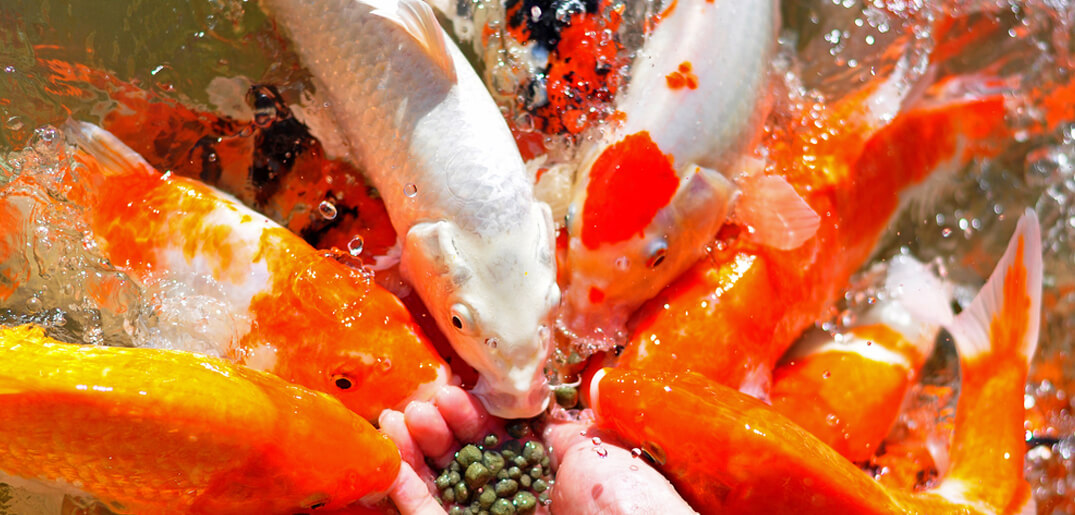As koi owners, we enjoy the value they bring to our lives, their beauty and serenity often brightening up our day. However, we also have to be there for them and care for their health and growth. One of the main aspects of this is, of course, feeding. Feeding your koi can sometimes be fun and entertaining, other times a chore, but the key is to do it consistently and also follow a plan to aid your koi in their growth as well as nutrition. We have prepared for you a set of simple guidelines that you can bear in mind when it’s time to feed your beloved koi.
Check Temperature Of The Water
We all know that koi, and fish in general, are sensitive to the water, be it different types or different temperatures. They thrive in certain types of water, depending on what type of fish they are. But did you know that the temperature of the water can also influence the food you give them? As koi are cold-blooded creatures, similar to their cousin carps, their metabolism is closely tied to the temperature of their water. Hence, your feeding habits should change over the seasons, to cater to their appetites.
Check the temperature of the water before feeding your koi. Here are some guidelines:
- Below 9°C / 48°F, you do not need to feed them much as they hardly eat. Avoid overfeeding them as the leftover food in the tank may promote bacteria growth in the water.
- If the temperature is above 9°C / 48°F, but below 18°C / 64°F, you should note the best type of food to feed them – in this case, it’s easily-digestible fatty food, particularly those containing wheat germ. Their digestion is likely to be slow when it’s cold, so you can feed them only twice a day, but make sure you give them the aforementioned type of food that can give them an energy boost, and avoid proteins.
- In the hot summer months, around 18°C / 64°F to 31°C / 88°F, it’s time to bring out the proteins. Fish proteins are ideal for this, but it is also a good idea to mix up their diet with fruit, vegetables, plankton and shrimp. Take note of their appetite, you may be feeding them between two to four times a day during this period.
- Any hotter than this and it pays to be careful and monitor your fish. Cut back on feedings, as increased stress and potential oxygen loss can affect your fish in an undesirable way. You may wish to regularly clean the water and filters, and possibly add aeration, in order to maximize the oxygen supply in the water.
The Five-Minute Rule
How long does your koi take to gobble up all the food you gave them? If they eat it all up within five minutes, you’re in a good place. However, if they leave any food behind after five minutes, scoop up the excess and feed them less the next time. Leaving excess food or overfeeding can cause bacteria and algae to form in the water, causing oxygen loss and possibly jeopardizing the health of the fish. If your koi are growing less than the average of ½” to 1″ per month, though, you may actually be underfeeding them, which affects their value and also may cause them to pass on from starvation.
Offer Variety
Just like humans, fish need to eat a variety of foods. Change food types to suit the season, they will adjust in a few weeks. You may also offer them a treat every now and then. Koi enjoy treats like worms, algae, shrimp, vegetables, fruits, and even some snacks like Cheerios! Feed them oranges to increase their Vitamin C levels too. Remember though, a treat is extra and should never substitute for real food.
Looking for fish food varieties, growth supplements and other fish care products? Get your supplies from Everything Koi, your one stop shop for all your koi care needs!


 Blog
Blog



